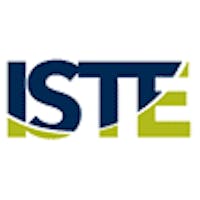In today's fast-paced educational landscape, technology plays an increasingly vital role in supporting student learning. However, districts often do not have the capacity to effectively evaluate the functional qualities of edtech products, resulting in teachers being frustrated with tools that may not be intuitive or usable vehicles for delivering instruction. To address this issue, ISTE has taken a significant step forward by introducing the next iteration of the ISTE Seal, which aims to elevate the importance of usability and strong pedagogy in learning solutions’ product design to both school districts and solution providers.
Built upon research completed as part of the Teacher Ready project, this initiative aims to enhance the educational ecosystem through two key approaches. First, it seeks to assist educators and district decision-makers in effectively evaluating and expressing requirements for edtech products that align with robust, research-supported instructional practices. By doing so, the initiative aims to promote the adoption of tools and resources that support and enable effective teaching and learning experiences. Second, the ISTE team rigorously evaluates and recognizes products with the relaunched ISTE Seal, which has incorporated comprehensive research and interviews in building a framework to define product usability in educational contexts.
Building a Common Language
The Teacher Ready framework has been instrumental in this transformation. By providing a framework for evaluating edtech tools validly and reliably, it offers a valuable data point that was previously absent. Elizabeth White, an educational technology specialist at Fairfax County Public Schools in Virginia, attests to the framework's efficacy, stating, "The Teacher Ready framework helped to put language to what we were trying to do. It helped us make evaluating edtech tools a lot more objective and gave us an additional data point that we didn't have in the first place."
One aspect of the framework is inclusivity. By providing a common language around inclusivity, the framework supports decision-makers by recognizing edtech resources that reflect diverse audiences. White highlights the importance of representation, stating, "We need to make sure a resource appeals to all audiences in that staff and students can see themselves in the resource." This focus on inclusivity helps foster an environment where students from diverse backgrounds can engage with technology that reflects their identities and experiences.
The Teacher Ready framework addresses the challenge of capacity faced by many educational institutions. With limited capacity to incorporate product requirements that support educator practice, it can be overwhelming for schools to vet the multitude of edtech tools that teachers request. By utilizing the Teacher Ready framework, decision-makers can narrow down their options effectively. White emphasizes this point: "We don't have an enormous capacity in our IT department to vet all the things that teachers want. We use component elements of the Teacher Ready framework to narrow down the options."
ISTE’s Teacher Ready team is excited to announce the release of a digital version of the evaluative framework. White is eager for this tool to be integrated into her district’s review procedures, explaining, “We have a centralized review process right now for edtech tools, and the first step is an instructional review. So I think once the Teacher Ready digital framework is available, we will probably revamp our instructional review procedures. This could be critical for our process.”
Product Development Alignment With Learning Science
For edtech vendors, the revised ISTE Seal has prompted a positive response. Ilana Kurizki, vice president of communications and social impact at BrainPOP, highlights the alignment between the Seal evaluation process and their product development goals. Kurizki emphasizes the importance of educator voice: "Listening to and learning from educators really informs our ongoing product development. We are really focused on the sweet spot between engagement and learning outcomes and on helping build the skills that kids need to thrive both in the classroom and beyond the school walls. We saw that there was a lot of rigor that the Teacher Ready team put into this evaluation process and the evolution of the ISTE Seal of Alignment—the research base, all of the indicators of quality and the prioritizing of usability—which is such a priority for us as well."
This commitment to user-centric design and empathizing with the needs of educators is consistent with the goals of the ISTE Seal. Barbara Hubert, the senior director of learning design at BrainPOP, underscores the significance of the Teacher Ready evaluation tool in promoting user-centricity and learning science. Hubert notes, "When thinking about learning and what we know about learning science—how thinking and learning happens and how learning outcomes are achieved—user-centricity is a huge piece of it." This alignment of the evaluation framework with learning science principles ensures that edtech tools are designed with the best interests of students and teachers in mind.
Moving Toward a Personalized Ecosystem
Building on ISTE’s Strengths: ISTE trains thousands of educators every year on the ISTE Standards, which provide competencies for learning, teaching and leading in the digital age. “We have built on the foundation of ISTE Standards and, with the new ISTE Seal, our goal is to essentially distill down what makes learning solutions practically usable for educators and also support evidence-based and research-backed pedagogy,” says Tal Havivi, senior director of industry partnerships at ISTE. “District leaders can incorporate this framework into procurement processes to drive accountability and commitment to how solution providers design products to meet educators’ usability needs and foster effective instruction.”
White summarizes, “We are already starting to see that vendors are being responsive to what the needs are in the classroom. It feels like we're moving the needle in both directions—like the tools are getting better, and our ability to vet tools is getting better. And so, as we move closer to the center, we really can develop a very personalized ecosystem of tools where students can have access to just what they need when they need it.”
The collaborative efforts of ISTE, educators and edtech vendors highlight the value of incorporating teacher voice and learning-science principles in the development and evaluation of edtech tools. As schools and districts continue to adopt these frameworks, the edtech landscape continues to drive more impact in ways that empower educators and optimize learning experiences for all students.
The ISTE Seal in Context: Effectively implementing learning solutions in a wide array of learning contexts is no easy feat. ISTE acknowledges the importance of evaluating and elevating solutions aimed at advancing evidence-based and research-supported teaching methods. Additionally, the organization collaborates closely with other intermediaries in the edtech space to promote technology-enabled teaching and learning. This work includes supporting the development of stronger IT infrastructure (e.g., Project Unicorn and 1EdTech’s focus on interoperability and multiple organizations’ focus on data privacy), evaluating districts’ contexts for edtech implementation with the Edtech Evidence Exchange Platform and evaluating evidence in various contexts with solutions like LearnPlatform. By incorporating a framework and market indicators around pedagogical and technical usability, ISTE is excited to contribute to product development that leads to a more coherent and complete edtech ecosystem.
How do we define “usability”?
To develop the Teacher Ready framework, the ISTE Research team completed a suite of research activities, including user experience studies and a literature review, to thoroughly explore characteristics of edtech product usability. Covering both technical and pedagogical usability, the framework cites five domains: user interface and agency, learning design, digital pedagogy, inclusivity, and data and assessment.



